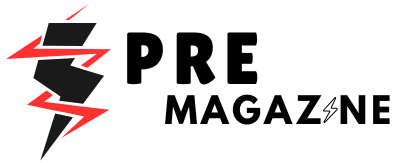In today’s digital world, understanding how the internet works behind the scenes has become more important than ever. One of the most fundamental components of any network is the IP address—a unique identifier that allows devices to communicate across the internet or within a private network. But sometimes, people encounter what appears to be a strange or incorrect IP address, such as 192.1y8.1.1. So, what exactly is 192.1y8.1.1? Is it real? Is it a mistake? Or does it serve some specific purpose?
In this article, we will break down what this string means, why people are searching for it, the most common mistakes related to it, and what you should know about valid IP address formats. Let’s untangle the confusion around 192.1y8.1.1 once and for all.
Understanding IP Addresses: The Basics
Before diving into the specifics of 192.1y8.1.1, it’s crucial to understand what an IP address is and how it’s typically formatted.
An IP (Internet Protocol) address is a unique identifier assigned to each device connected to a network. It serves two main purposes:
- Identifying a host or device on a network.
- Providing the location of the host in the network.
There are two main types of IP addresses:
- IPv4 (Internet Protocol version 4): The most common type, written in a format like
192.168.1.1. - IPv6 (Internet Protocol version 6): A newer version developed to deal with IP address exhaustion, written like
2001:0db8:85a3:0000:0000:8a2e:0370:7334.
IPv4 Format
IPv4 addresses consist of four octets (groups of numbers), separated by periods. Each octet ranges from 0 to 255. For example:
CopyEdit192.168.1.1
10.0.0.1
172.16.254.3
Why 192.1y8.1.1 Is Not a Valid IP Address
Now let’s focus on the keyword in question: 192.1y8.1.1.
At first glance, it seems to mimic the structure of a typical IPv4 address. But there’s a problem: the “1y8” portion is not valid.
IP addresses only include numerical digits. The inclusion of a letter (like “y”) in the second octet breaks the standard format of an IPv4 address.
Here’s why it’s invalid:
- The segment “1y8” contains a non-numeric character (
y), which disqualifies it as a valid octet. - All parts of an IPv4 address must be numbers between 0 and 255.
- Valid IP addresses do not include letters, special characters, or symbols.
Common Causes of the 192.1y8.1.1 Mistake
You may be wondering: if 192.1y8.1.1 is invalid, why do people search for it?
Here are the most likely reasons:
1. Typing Mistake
The most common cause is simply a typo. Many people intend to type 192.168.1.1, which is a common default gateway used by routers and modems, but mistakenly hit the wrong key, turning “168” into “1y8”.
2. Autocorrect Error
Smartphone and tablet keyboards sometimes autocorrect strings that look unfamiliar. If a user types “192.168.1.1” and the system doesn’t recognize it, it might suggest or auto-correct to “192.1y8.1.1”.
3. Misreading the Address
Visual confusion, especially on smaller screens or in certain fonts, can make “168” look like “1y8”, leading users to misread and incorrectly retype the address.
4. Fake or Malicious Sources
Some websites or forums may inadvertently or deliberately list the wrong IP address. Malicious actors might use a fake IP to trick users into clicking harmful links or misconfiguring their routers.
What Is 192.168.1.1? The IP Address People Really Mean
In most cases, users trying to access 192.1y8.1.1 actually meant to type 192.168.1.1.
192.168.1.1 is:
- A private IP address.
- Commonly used as the default gateway by routers such as Linksys, Netgear, TP-Link, and others.
- Used to access the router’s admin panel, where you can configure Wi-Fi settings, change the network name (SSID), set up port forwarding, and more.
How to Access It:
- Open a web browser.
- Type
http://192.168.1.1in the address bar. - Press Enter.
- You’ll be prompted to enter the admin username and password.
💡 If you don’t know your router’s login credentials, they are often printed on a label on the router or available in the device’s manual.
Dangers of Misusing or Trusting Invalid IPs
It might seem harmless to type an incorrect IP address like 192.1y8.1.1, but there are a few security concerns to keep in mind.
1. Phishing Risks
If a user is redirected to a suspicious website pretending to be a router login page, they may enter their credentials into a fake form. This could lead to stolen data or compromised networks.
2. Wasted Time and Troubleshooting Confusion
Users might spend time trying to access a non-existent page, leading to unnecessary frustration or the belief that their network is broken.
3. Malware or Scam Pages
Some malicious websites register domains similar to mistyped IP addresses in order to serve ads, malware, or scams.
Always double-check the IP address you’re entering to avoid these issues.
How to Avoid IP Address Mistakes
To ensure you’re using the correct IP address, here are a few helpful tips:
✅ Check the Router Label
Most routers have a sticker with the default IP address printed on them.
✅ Use the Command Prompt (Windows)
You can find your default gateway by opening Command Prompt and typing:
nginxCopyEditipconfig
Look for the line labeled Default Gateway—this is the IP you need to access your router settings.
✅ Use the Terminal (Mac/Linux)
In the terminal, type:
cppCopyEditnetstat -nr | grep default
Or
arduinoCopyEditroute -n get default
✅ Bookmark Correct URLs
Once you know the correct IP (like 192.168.1.1), bookmark it for future use to avoid typos.
Conclusion
The IP address 192.1y8.1.1 is not real and does not conform to valid IP address standards. It’s most likely the result of a typo or autocorrect error when users intend to type 192.168.1.1—a widely used address for accessing router settings.
Understanding the structure of IP addresses, especially IPv4, can help avoid these kinds of mistakes and keep your network activities secure and efficient. Whether you’re troubleshooting your home Wi-Fi or configuring a new router, always ensure you’re using valid IP addresses and stay cautious of any that seem suspicious or malformed.
So next time you see 192.1y8.1.1, remember: it’s not a mysterious new protocol—it’s just a common mix-up. Stick to the valid format, and you’ll be in control of your digital connections.
Do you want to read more interesting articles like this? So you can visit Premagazine.co.uk anytime or anyplace.


